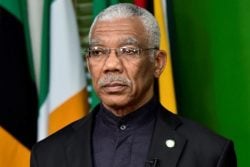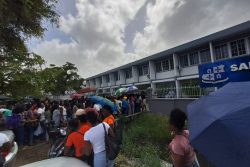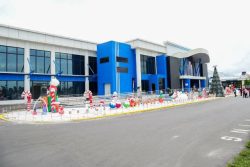Dear Editor,
Guyana is poised for continued impressive growth in Gross Domestic Product (GDP), promising measurable benefits for all Guyanese. The nation’s infrastructure investments aim to improve the facilities and systems that support its economy and society. These investments will enhance access to clean water, affordable electricity, high-paying jobs, better education, and improved healthcare.
Guyana’s infrastructure includes the essential structures for providing services, transportation, communication, and overall quality of life. President Irfan Ali has repeatedly emphasized his government’s commitment to enhancing infrastructure to foster national development and economic growth. He stated, “Infrastructure is the backbone of our economy. It is essential for facilitating trade, attracting investment, and improving the quality of life for our citizens.” This investment directly increases household incomes and creates opportunities for entrepreneurship and small business development. Most importantly, it demonstrates the government’s commitment to improving the lives of all Guyanese while fulfilling its electoral promise of a fairer, more inclusive Guyana.
The total value of infrastructure projects reflects President Ali’s focus on economic growth, attracting foreign investment, and enhancing the quality of life for Guyanese. Infrastructure spending is viewed as an economic investment aiming to improve every citizen’s lives. The Government of Guyana projects that these investments could reach several billion USD over the next decade, with estimates suggesting spending could exceed $10 billion as the country modernizes its facilities.
The economic benefits of infrastructure investment include increased public goods, which are non-excludable and non-rivalrous—available for all to use without depriving others. Additionally, such investments have a multiplier effect; every dollar spent generates increased economic activity. Beyond job creation, they can lower transportation costs and enhance access to quality education and healthcare, thus improving the workforce’s skills and health. This contributes to increased productivity and economic growth, a key government priority.
As of 2024, Guyana is undertaking several significant infrastructure projects: Demerara River Bridge: Estimated cost is around $150 million; Berbice River Bridge: Approximate cost of $161 million; Linden to Lethem Road: Expected investment of $200 million; Airport Expansion: Costing about $150 million; Deep-Water Port: Estimated at $300 million or more; Amaila Falls Project: Estimated to cost $840 million, aimed at reducing energy costs, and Water Supply and Sanitation Improvements: Costs between $50 million and $100 million.
A notable benefit of the new bridges, which is in Guyanese’s interest, is that they will eventually allow Guyanese to traverse different parts of the country without paying a toll. President Ali recently announced that there will be no tolls on these crossings, benefiting both households and businesses while significantly reducing transportation costs. This is precisely what infrastructure investment is intended to achieve: making travel and business more accessible for Guyanese. Lowering transportation costs will lessen the burden on households and small businesses. When speaking about the Berbice River Bridge, Vice President Jagdeo noted, “We had to build that bridge because people were spending hours, sometimes days, at the ferry… Most people, especially young ones, don’t know about the hardships there. It used to be long lines, and the price was similar to what is charged as bridge toll now.” This decision by the Government should be celebrated as, ultimately, Guyanese consumers are the principled beneficiaries.
Overall, these infrastructure projects illustrate Guyana’s commitment to leveraging its natural resources for sustainable development and enhancing the quality of life for its citizens. These investments are crucial for economic growth, attracting foreign investment, and improving regional connectivity, with millions also invested in agriculture, education, and public safety. The economics of infrastructure spending is straightforward: it impacts all Guyanese. It facilitates commerce for households and businesses, creates jobs, and opens new opportunities for young entrepreneurs. Most importantly, infrastructure investments are foundational elements that support various aspects of economic development, driving growth, efficiency, and the overall well-being of the Guyanese people.
Sincerely,
Dr. Tilokie Arnold Depoo
Economist





